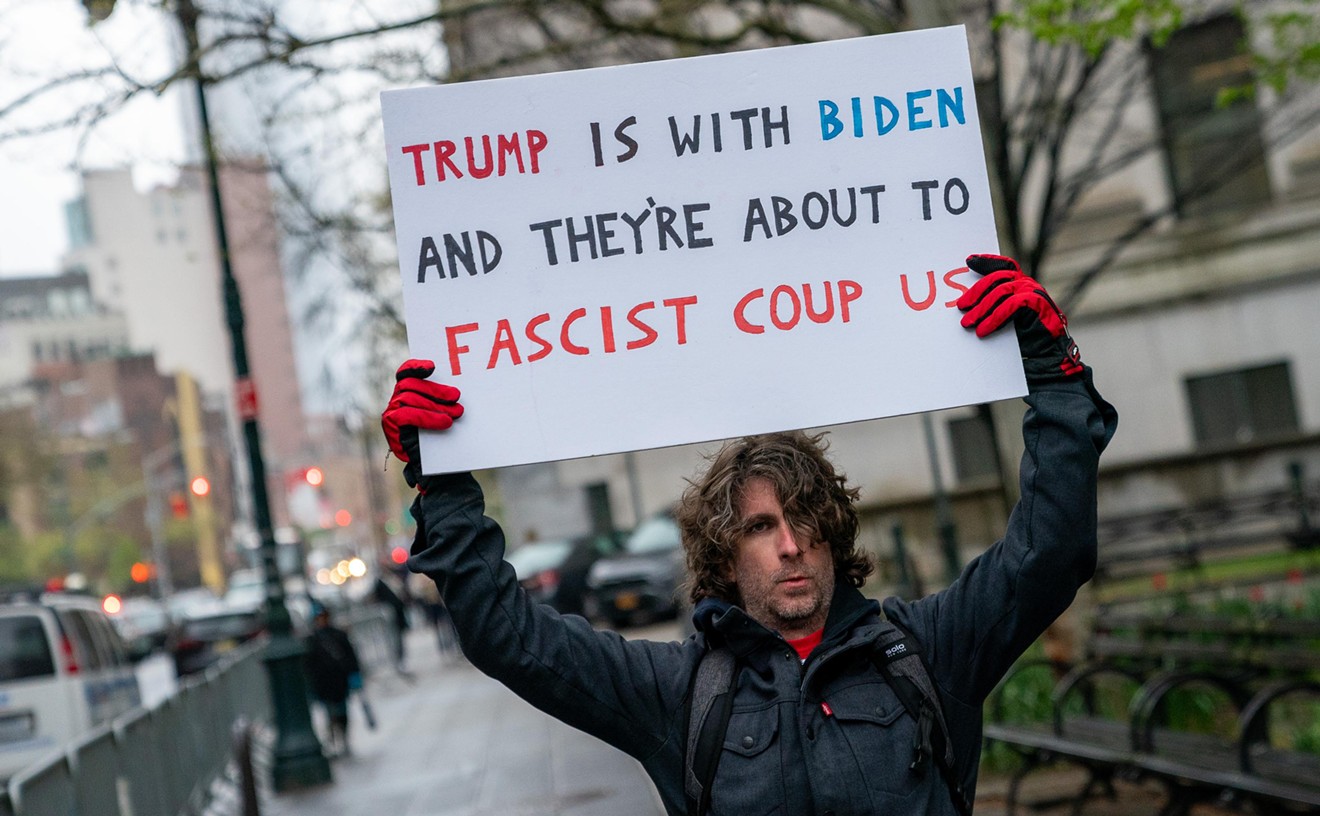Interpol ranks the trafficking of stolen art and cultural artifacts just behind drug-smuggling, illegal arms sales, and money-laundering in terms of major crime worldwide. Officials estimate art losses hit the eight-billion-dollar mark last year, and the FBI claims fewer than ten percent of all works reported stolen — domestically and internationally — are ever recovered. With Art Basel-fueled sales expected to top $400 million this year alone, buyers and sellers alike would be forgiven for being jittery.
When it comes to protecting his Picassos, Warhols, and Mirós, Miami's own Gary Nader feels confident his trump card will foil scum plotting to rob him. To protect his multimillion-dollar inventory, the art dealer has built a twenty-foot by twenty-foot reinforced concrete vault with a blast-proof steel door in his new Wynwood gallery. Like many other local galleries and collectors, Nader has come to rely on multiple layers of security to confidently cover his assets and has also installed a high-tech security system, including a mind-rattling alarm to discourage potential thieves.
"My alarm will blow your ears off if you stay inside the gallery more than 30 seconds after triggering it," Nader says. However, these measures won't deter a persistent thief, advises Det. Don Hrycyk of the Los Angeles Police Department's Art Theft Detail, the only full-time squad of its kind in the nation. Founded in the mid-Eighties in response to a rise in art burglaries and a distinct lack of cases being solved, the unit now has two full-time detectives on its Picasso patrol.
"Trying to turn your gallery into Fort Knox might not be enough," he adds. "I've seen determined thieves pry up floorboards or tunnel through walls after disabling alarms by cutting phone lines."
Would-be bandits hoping to help themselves to some loot from Art Basel's showcase of works on display at the Miami Beach Convention Center might find themselves stymied by an impenetrable security net including armed off-duty police officers and private security at all entrances and exits.
"We have thousands of pieces being shipped in and out of here and have never had an incident," a Basel spokesman reports, adding that even known gallery employees must present a photo ID when moving art on and off the premises during the four-day fair.
Detective Hrycyk, whose detail has helped recover almost $70 million in stolen art since 1993, explains that art thieves, who run the gamut from suave con men to art-challenged morons, often can't resist the lure of making a quick score. "I've dealt with all sorts — from your Thomas Crown-type arch-villains to lesser thugs," he quips.
Local art insurance expert Seth Dolfi, whose clients include the Frost Museum, Fredric Snitzer Gallery, the Wolfsonian, and scores of South Florida collectors, asserts his clients have little to fear, citing that typical sneak thefts are usually the work of bumbling domestics or unscrupulous contractors.
"What they should remain alert for are slimy opportunists who might try to walk off with something small during a big bash. The cojones on some of those people is shocking sometimes."
Hrycyk recalls one case involving a flamboyant swindler who hoodwinked an elderly Hungarian couple out of a small painting depicting a rabbi, one they'd had in their family for 200 years. The con artist adopted the name Count Gabor Eordogh de Turul and tried to pawn off the work as a Goya, developing a Website for a sham entity called the Solo Goya Institute, where he hoped to peddle the purloined fake.
During another investigation, Hrycyk nailed junkyard vermin Samuel Westscott Cunningham, who sold a $10,000, ten-foot-tall sculpture for scrap metal. "This guy didn't know what he was looking at after breaking into an artist's studio and got $9.10 for what he thought was a piece of junk," the art cop said.
Professional galleries and well-known artists' studios are not the only targets, according to Stevan Layne, president of Layne Consultants International in Colorado and author of the Cultural Property Protection Manual. He says skittish private collectors are increasingly turning their homes into fortresses.
"Thieves figure why bother robbing a bank for $2000 when they can snatch a painting off someone's wall worth $2 million. Collectors are installing microwave motion sensors and sophisticated biometric systems that scan retinas, fingerprints, or are voice-activated."
"It's important to be careful, but what's the use being paranoid?" remarks Miami's Kevin Bruk. "I don't see the big deal; if someone wants to raid your house and steal your art, let him. You don't want to piss those types of people off so they end up shooting you, your wife, and dog. That's what insurance is for."
Bruk admits, however, he stopped taking chances after someone filched a small Tao Ray painting from the bathroom of his old space in the Design District. He now keeps a tight lid on his Wynwood gallery — as do many of his art dealer neighbors — by way of constant video surveillance so he can monitor his collection from just about anywhere.










